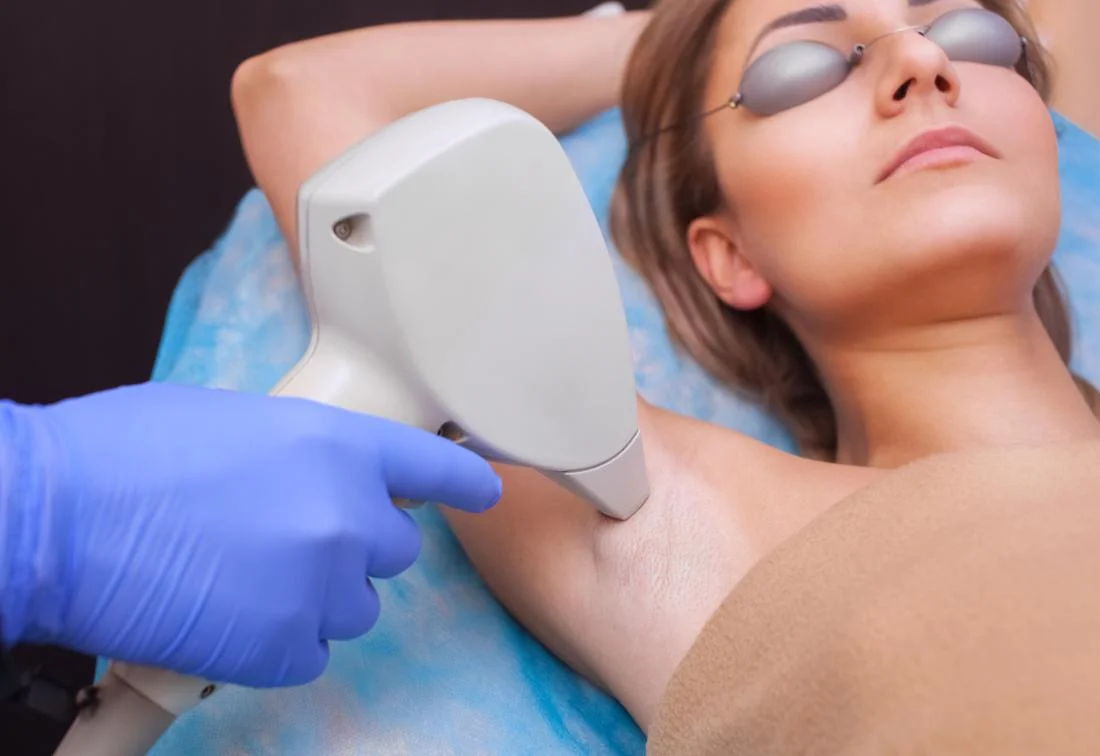Laser hair removal refers to a procedure that removes unwanted body hair. Although not permanent, many choose this treatment for their underarms, back, or bikini areas since the results last longer than shaving or waxing. This treatment aims to destroy hair follicles to eliminate hair regrowth, but if the follicles are only damaged during the hair removal procedure, they will grow again.
What is laser hair removal?
Laser hair removal is the non-invasive method used for permanently reducing or removing unwanted facial or body hair. Nowadays, laser hair removal is becoming one of the most common aesthetic procedures. Most people will need about six treatments to get rid of all of their unwanted hair. Laser hair removal is usually safe, but could leave burns, scars, or permanent skin discoloration.

How does laser hair removal work?
During laser hair removal, light is used to target the pigment in individual hairs. This light will travel down the shaft of your hair and into your hair follicle. When the hair follicle is destroyed, hair can no longer grow from that spot. The pigment in the hair attracts the laser, so darker hair absorbs the laser more effectively, which is why people with dark hair and light skin are ideal candidates for laser hair removal. Hair follows a unique growth cycle that involves resting, shedding, and growing periods. This is why your sessions will be over 2-3 months, so all the hair in the resting phase also reaches the growing phase to be destroyed.
How long does laser hair removal last?
If the hair follicle is destroyed then the results from laser hair removal are permanent, but if the follicle is only damaged then the hair will eventually regrow. Most people can expect some hair regrowth within a few months. Once this happens, they can opt for more removal treatments. Whether or not hair grows back depends on numerous factors, including the type of hair that regrows and the skill of the person removing the hair. Most people find that when hair regrows, it is lighter and less noticeable than it was before. This is because the laser may damage the hair follicle even when it fails to destroy it. In some cases, hair may be too light, too short, or resistant to treatment. In these cases, a person might choose to use other hair removal methods, such as plucking stray hair.

Preparing for laser hair removal
In preparation for laser hair removal, you should stay out of the sun for a few days before the procedure. Needless to say, laser hair removal will not be performed on tanned skin. You should also avoid irritating, waxing, or plucking your skin. You should also reschedule your appointment if you have an active infection, such as a cold sore or bacterial skin infection. Following these instructions improves the effectiveness of the procedure and reduces the risk of side effects.
Target areas for laser hair removal
Back
Shoulders
Arms
Chest
Bikini area
Legs
Neck
Upper lip
Chin
Side effects and risks of laser hair removal
During a laser hair removal, you may experience burning, stinging, or discomfort; which is why your doctor will apply a numbing cream to the area. Minor side effects may include:
Changes in the color of the skin (particularly in people with dark skin)
Skin redness
Blistering or crusting of the skin
Sometimes, irritation related to hair removal can cause scarring. Damaged skin can also become infected. Though rare, skin infections can spread and become life-threatening.

Benefits of Laser Hair Removal
Precision: Lasers can selectively target dark, coarse hairs while leaving the surrounding skin undamaged.
Speed: Each pulse of the laser takes a fraction of a second and can treat many hairs at the same time. The laser can treat an area approximately the size of a quarter every second. Small areas such as the upper lip can be treated in less than a minute, and large areas, such as the back or legs, may take up to an hour.
Predictability: Most patients have permanent hair loss after an average of three to seven sessions.
What to expect after laser hair removal?
The recovery time after the procedure is minimal and most patients can return to life as normal directly after. It’s important to wear sunscreen to help prevent further skin irritations. Most patients see a 10-25% reduction in hair after the first treatment. For most patients, it will take between 3-8 sessions for permanent hair removal. Also, you will likely need a touch-up session yearly to maintain effect.
Conclusion
In conclusion, Laser Hair Removal is a medical procedure that uses a concentrated beam of light to remove unwanted hair. The light energy is converted to heat, damaging the hair follicles and inhibiting or delaying future hair growth. While it’s most effective for people with light skin and dark hair, advances in technology have made it an option for people with darker skin. It’s important to note that while the results last longer than shaving or waxing, laser hair removal usually doesn’t result in permanent hair removal. Multiple treatments are needed for initial hair removal, and maintenance treatments might be needed as well. As with any medical procedure, there can be side effects, including skin irritation, pigment changes, and in rare cases, blistering, crusting, scarring, or other changes in skin texture.
Read more: